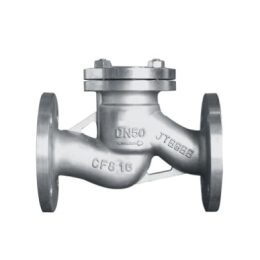Making a Manual Bronze Shut-Off Gate Valve

Introduction to Manual Bronze Valve Making
Bronze shut-off gate valves are commonly used in various industries such as manufacturing, oil and gas, and construction. These valves are known for their durability and resistance to corrosion, making them ideal for long-term use. Making a manual bronze shut-off gate valve from scratch may seem like a daunting task, but it is a simple process that can be done with the right tools and materials. In this article, we will outline the steps involved in making a manual bronze shut-off gate valve.
Materials and Tools Required for the Job
To make a manual bronze shut-off gate valve, you will need the following materials and tools:
- Bronze ingot
- Sand
- Oil-based sand mold release
- Furnace
- Crucible
- Tongs
- Pattern board
- Chisels
- Files
- Lathe
- Milling machine
- Drill press
- Soldering iron
- Flux
- Solder
- Pipe wrench
These materials and tools can be purchased from a hardware store or online retailer.
Step-by-Step Guide to Casting the Valve Body
- Create a pattern board for the valve body using wood or styrofoam.
- Fill a flask with sand and level it.
- Place the pattern board in the flask and fill the flask with more sand.
- Use a rammer to compress the sand.
- Remove the pattern board and apply the sand mold release to the sand.
- Melt the bronze ingot in a crucible using a furnace.
- Pour the molten bronze into the sand mold.
- Let the bronze cool and remove the sand from the casting.
Machining the Valve and Preparing for Assembly
- Use a lathe to turn the valve body to the desired shape and size.
- Use a milling machine to mill the seat face and bore.
- Drill the holes for the stem and handwheel.
- Use a soldering iron to attach the top and bottom bonnets to the valve body.
- Apply flux to the joints and solder them together.
- Use a file to smooth out any rough edges.
Assembling the Bronze Shut-Off Gate Valve
- Insert the stem into the valve body.
- Attach the handwheel to the stem.
- Install the packing and gland nut.
- Tighten the gland nut to prevent leaks.
- Attach the pipes to the valve using a pipe wrench.
Testing and Quality Control of the Valve
- Test the valve for leaks by pressurizing the system and observing for any leaks.
- Check the valve’s operation by turning the handwheel and observing if the valve opens and closes smoothly.
- Conduct a pressure test to ensure the valve can withstand the system’s maximum pressure.
- Inspect the valve for any defects or imperfections.
Conclusion
Making a manual bronze shut-off gate valve requires some skill and knowledge of metalworking, but it is a straightforward process that can be done with the right materials and tools. By following the steps outlined in this article, you can create a durable and reliable valve that will serve you for years to come. Remember to conduct thorough testing and quality control to ensure the valve meets industry standards and requirements.
- Gate Valves: Bidirectional and Versatile for Various Applications
- Talking about the future development of electric valves
- Ball Valve Maintenance and Installation
- Advantages and disadvantages of butterfly valves
- High Performance Butterfly Valve
- “Understanding Ball Valves: Exploring the Parts of a High-Performance Control Solution”



